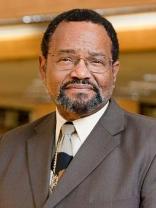Confront America’s history of racism to understand Flint, activist asserts
By Robert R. Thomas
Racism and economic inequality go hand-in-glove in America, an anti-racism activist told an audience of 150 at the Flint Public Library, and Flint’s recent travails are a pointed example.
Tim Wise asserted to the St. Patrick’s Day crowd that the history of race relations most of us have been taught is a lie.
Quoting James Baldwin from a 1965 Ebony interview, he said ignorance of the truth leaves white people in particular “impaled like a butterfly on a pin and they become incapable of seeing themselves or changing themselves or changing the world.”
“How important it is,” Wise said, “to be able to have a historical memory and a sociological imagination if we are to understand what happened here in Flint.”
Wise is an educator cited by Utne Reader as “one of 25 visionaries who are changing your world” and author of seven books, most recently Under the Affluence: Shaming the Poor, Praising the Rich and Sacrificing the Future of America. His appearance in Flint inaugurated The Tendaji Talks, a series set over the next year to focus on two community conversations: Tackling Systemic Racism and the African American History of Flint.
Commemorating Tendaji Ganges
The talks commemorate the life of Tendaji Wasifu Ganges, an educator, mentor, Nigerian chief and the executive director of the Office of Educational Opportunities Initiatives at the University of Michigan-Flint for nearly 20 years.

The late Tendaji Ganges
Ganges also was a founding member of Neighborhoods Without Borders, the sponsor of this series, whose efforts center on working to dismantle systemic and institutional racism.
In his opening remarks, Wise referenced his personal and collegial connection with Ganges, a man he called his friend.
He then set the template for his talk with the Baldwin quote: “People who imagine that history flatters them, as it does, indeed, since they wrote it, are impaled on their history like a butterfly on a pin and they become incapable of seeing themselves or changing themselves or changing the world.”
Wise followed with “This is where it seems to me that most white Americans find themselves—impaled. They are dimly, or perhaps vividly aware that the story they fed themselves is mainly a lie. But they do not know how to be released from it and they suffer enormously from the resulting incoherence.”
He warned that history must be confronted to be released from it, and that false histories will follow generations. You can’t teach the children what you don’t know, he pointed out. In the interim ignorance, he predicted, the culture will supply daily doses of its answers and false narratives.
He cited examples of how institutional segregated housing and inequality came from practices like redlining and predatory lending and local, state and federal government policies. How public housing, initially created for poor white people, became a concentration camp, predominately for people of color, and how the interstate highway program of the 1950s offered white flight incentives.
Asterisk to the American Dream
One of the culture’s false answers, Wise said, is “Wherever you end up, it’s on you. If you work hard enough, you can make it. We have to be honest. If we don’t, the culture will supply its answer.”
As the father of daughters, Wise added a big asterisk to the American Dream: “Well, it’s a little bit more complicated than work hard and you will do well.”
“The meritocracy default of the culture has several faults—among them,” Wise said, “the depth of the lie about poor folks, specifically poor black folks. I’m trying to prepare my children for the way the world actually is, not the way I’d like it to be. So I teach them about the asterisk.” He teaches them, he specified, about racism and sexism and segregation and economic inequality. If he doesn’t, he insures that the culture will supply its meritocracy myth about equality and working hard in a rigged game.
He offered two examples of the history of race and class in America. One was the current national political campaigns and the other was the case of three cities with key elements in common—Flint, Baltimore and New Orleans.
He began with the commonalities of the cities: systemic and institutional neglect and racism.
What connects Baltimore, New Orleans, Flint
Baltimore’s story also involved lead poisoning. There, the delivery system was not the water, but the lead paint in the row houses that landlords knew were toxic but continued with business as usual.
Wise explained that Freddy Gray and his family were victims of lead poisoning in one of those rowhouses and that Freddy Gray’s behavior exhibited classic signs of lead-poisoning.
Wise expanded his Baltimore example by telling the story of how the government was also involved in lead-poisoning-by-paint in poor people’s segregated public housing.
“In the 1990s it was finally revealed that Johns Hopkins University, the Kennedy-Krieger Institute in particular, had been engaged in a lead abatement study using federal dollars for the study along with some private monies, but it was a federally funded effort.
“And what they were doing was recruiting poor, almost exclusively black families in Baltimore, and encouraging—one might say enticing, one might even say bribing them—to go into various types of apartments that were available in the city, some of which had been pretty much abated of lead.
“And then another set of apartments where there was sort of a medium level of lead abatement. And then another level where there had been virtually no lead abatement at all.”
The most maddening part of the study, Wise pointed out, was that the effects of lead on the brains of developing children were already known.
“So, in a sense this is Tuskegee updated for modern times. We’re going to experiment on people in the name of science,” Wise said.
When the question was raised: Why not deal with the lead-infected housing by simply tearing it down, the answer, reports Wise, was that this solution was deemed too expensive and not cost effective. When he asked, “Where have we heard that most recently?” his question was answered with resounding applause.
The New Orleans report, supported by what Wise experienced having lived and worked in New Orleans for ten years, was equally damning of a system of success that said some people are disposable, collateral damage, particularly poor people of color.
“It was the result of elites,” he said, regardless of race and regardless of party, making decisions about working class and poor people’s lives that has suggested that certain people’s lives don’t matter.” He called what happened in New Orleans surrounding Katrina “a bipartisan multi-racial crime.”
The system does not believe that black lives matter, Wise said.
What’s left out by “all lives matter”
“It is important to articulate openly and loudly that black lives matter. It is a way of insisting that which has been left out shall be articulated. The problem with “All Lives Matter” is that white people have a history of saying ALL and not meaning it. All men are created equal is not what was meant.”
Wise reminded that the real history of America is that racism and economic inequality go hand in glove. He noted that it wasn’t “those people” of color who destroyed our economy in 2008 when 20 percent of our accumulated national net worth, $12½ trillion, went out the door; it was, he said, “white dudes.”
He added that when he says “white dudes,” he is sometimes accused of racism, to which he replies, “this is not racism; it’s observation.” If the “dudes” who brought the economy to disaster were people of color or immigrants or Islamists, he suggested, the perpetrators’ color and ethnicity would have been identified immediately.
An examination followed of what he called a completely unbalanced economic system, a system in which the wealthiest one-tenth of one percent of people own the same stuff as the bottom 90 percent.
Capital knows no borders, he noted, adding that today it moves instantly around the globe with the push of a button. Capital’s “goods can cross borders to get the highest price in search of the highest rate of return,” Wise pointed out, “but labor can’t cross borders to get the highest wage. By definition that is rigging the game in favor of capital and against working people.”
The Walmart SNAP example
Wise exemplified how rigged the game is against working people by relating the Walmart SNAP benefits story.
“Walmart, the biggest employer in the country—it used to be GM—and one of the wealthiest companies on the planet, continues to pay the vast majority of their workers wages that are not enough to live on, so those workers then comprise the biggest single chunk of SNAP beneficiaries — what we used to call food stamps — the biggest single demographic in any given community.
“It’s not black folks; it’s certainly not Latino folks; it’s not even poor white folks per capita; per capita the biggest single demographic group in any community receiving SNAP benefits are people who work at Walmart, and where, pray tell, do you think they redeem their SNAP benefits? At Walmart. $13 ½ billion of SNAP redemptions each year with the wealthiest company on the face of the earth. Now is that a scam, or what? You are basically having to subsidize the wages of workers at the wealthiest company going.”
On that note Wise concluded with an impassioned plea to “wake up to our real history” and how that relates to what is really happening in Flint and Baltimore and New Orleans. He urged the audience to see that racism and inequality are no more our friends than ignorance.
“That’s the situation we have right now. That’s the economy we live in. That’s where the focus needs to be. But instead, we get distracted by all these things and working class white folks don’t see their commonality of interest.
“Until we’re able to point out that commonality, until we’re able to point out that we’re all being played for fools by a system that was predicated upon a very, very narrow elite taking away virtually all of the benefits of that system and the rest of us fighting over the pieces of a pie that not one of us owns, we’re not going to get anywhere in this country.”
The Tendaji Talks resume in April. For a full schedule contact Flint Public Library, the host site of the talks.
Staff writer and columnist Robert R. Thomas can be reached at captzero@sbcglobal.net. EVM editor Jan Worth-Nelson contributed to this report. She can be reached at janworth1118@gmail.com.


You must be logged in to post a comment.